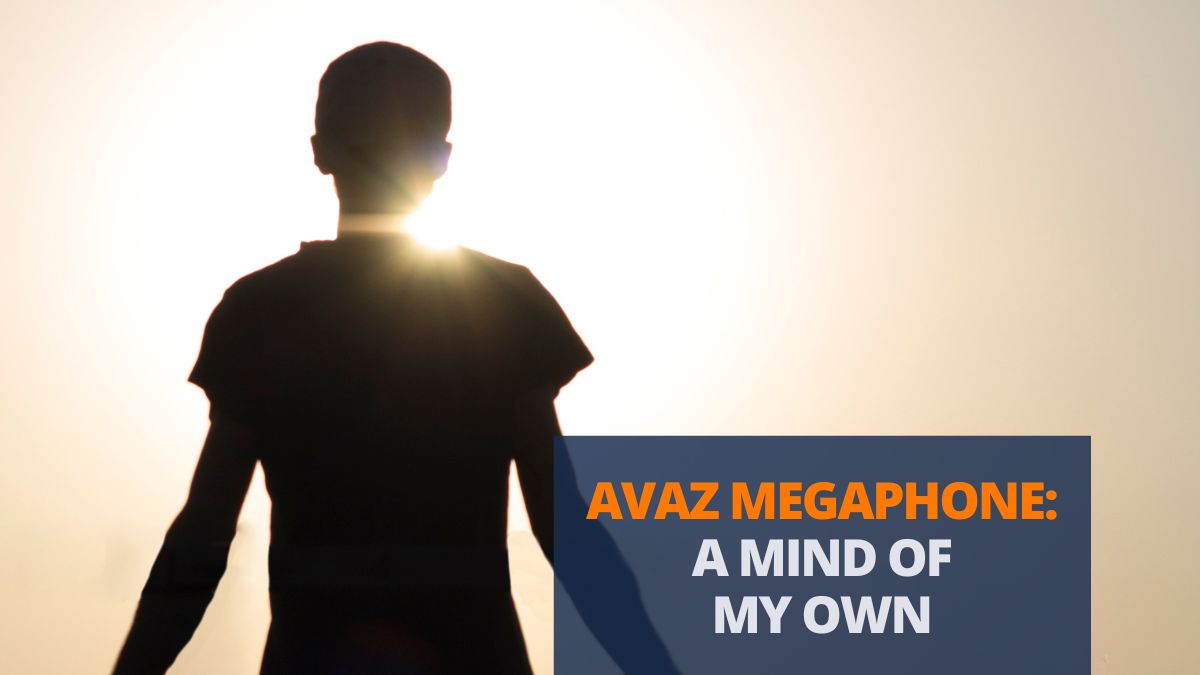Avaz is happy to bring you this guest post on autistic children and communication by Kamini Lakhani, an advocate for autism awareness and empowerment in April which is celebrated as Autism Acceptance Month.
Kamini is the authorized Director of Professional Training, Relationship Development Intervention (RDI) in India and the Middle East, and a Behavioral Analyst. She is a member of the Resource Committee for the Forum for Autism (FFA) and a core committee member of China Gate – a support group for children with learning disabilities and their families. Being the mother of a child (now young adult) on the spectrum, she understands the challenges encountered by parents of similarly abled children.


“That’s impossible. My son cannot have autism. Can’t you see how beautiful he is?”
This was me protesting to the pediatrician who diagnosed my son, Mohit 28 years ago.
In those days the rates of autism were 1 in 10000. (So I was told)
I didn’t know what autism was. I had read only 1 article that had appeared in the Readers’ Digest a few months prior to Mohit’s diagnosis.
The child they described in the article, wasn’t anything like him.
I struggled with the diagnosis and went through the cycles of denial, anger, grief before I finally accepted.
The main features of ASD included lack of eye contact, not interacting with other children or caregivers, getting upset by changes in routine, and limited language with difficulty in communication.
In those days, the prognosis was bleak.
All us, mothers, were afraid of talking about the future of our children.
Language was of primary concern. ‘If only my child could talk’, was a favorite.
‘He talks but doesn’t tell me about his day’, was another.
Life took me in another direction. To support Mohit, I got trained as an Associate Behavior Analyst and an RDI Consultant.
We extended support to other families as well.
This is how SAI and SAI Connections were born.
Life looks very different from where I stand today.
If I could share a few messages about communication with parents of newly diagnosed autistic children, they would be:
1. Focus on your relationship with your child


Don’t let the diagnosis over power you to a point where all you think and see is ‘autism’.
Stop thinking only of behavioral excesses or deficits and language development.
Look at the beautiful child in front of you.
S/he awaits your love and acceptance, longing to have a relationship with you.
Build that relationship with your child, your life (and your child’s) will be transformed.
“This is a FOREVER journey with this creative, funny, highly intelligent, aggressive, impulsive, nonsocial, behavioral, often times loving individual. The nurse said to me after 6 hours with him ‘He is a gift’ INDEED he is.”
– Janet Frenchette Held, Parent
2. Work on the foundations of communication
If we look at the developmental trajectory of typically developing children, words follow only after some fundamental foundations are in place.
A little baby responds to a mother by closeness to her body and warmth. Facial expressions, prosody, gestures play a major role.
Ever noticed how a mother coos to a baby? The peek a boo games, voices and gestures.
Autistic individuals miss those foundations.
Not because of what a parent did or what the child did. But simply because the brain is wired differently.
So when you communicate with your child, use pauses, use gestures, exaggerate your facial expressions.
This will add value to the words you use.
3. Co-participate with your child


Instruction has its place, but don’t instruct your child all the time.
Instead, play with your child, engage in several activities with them.
For sometime, forget about the language goals and interact with your child- just for the sake of connecting with him/her.
Give yourself an active role. For example you may toss a ball back and forth, or play cricket.
If your child is older, prepare breakfast together.
You and your child can set the table together, you can hand the plates and cutlery, let your child set it up.
Work on the fluidity of actions. Words will follow.
4. Use Communication tools


I can hear the question from parents of non verbal autistic children.
‘But my child doesn’t talk.’
Currently, your child may not be using words to communicate.
But communication is way beyond words. Build the foundations and use an AAC device (Augmentative and Alternative Communication)
Many of my students use the AVAZ app.
They type, use pictures to communicate.
The best part is that the AVAZ app gives voice feedback. So if a child types out a sentence, the app reads it aloud.
It becomes the child’s voice.
I like to use AVAZ, even for my students who may not be non vocal but have limited vocabulary. I believe it helps enhance their language and supports communication.
5. Use declarative language
Communication is part of life. Use experience sharing communication .
Share with your child, instead of questioning him or her all the time.
Declarative language, plain and simple, is stating out loud what one knows or thinks in the form of a comment. It may be used to share an opinion (I love spaghetti!); make a prediction (I think we are going to the movies tomorrow.); announce / celebrate (We had a great time today!); observe (I notice that your friend wants a turn.); reflect on past experience (Last time this stopped working we checked the batteries.); or problem solve (We need tape to fix it.). Declarative language does not require a verbal response. Rather, it invites experience-sharing, and provides an ideal social framework for later conversational interactions.
– Linda Murphy, Speech Language Pathologist, RDI Consultant
My teacher, Dr Steven Gutstein of RDI Connect suggests that only 30% of our communication should be instructive or imperative. The rest should be declarative of experience sharing communication.
To get an in-depth understanding of declarative communication, feel free to order this ebook I recently wrote.


In conclusion, have hope for your child.
An autism diagnosis need not bring sadness to your life.
We know much more now than we did 3 decades ago.
Have hope. Your child can certainly flourish and enjoy a good quality of life.
On this occasion of World Autism Acceptance Month, I wish you joy and hope.
Remember, acceptance starts with you.
Lets together change the prognosis from bleak to bright.
Hope you enjoyed reading this blog on communication pointers for autistic children. Please leave your suggestions and feedback in the comment section below.



